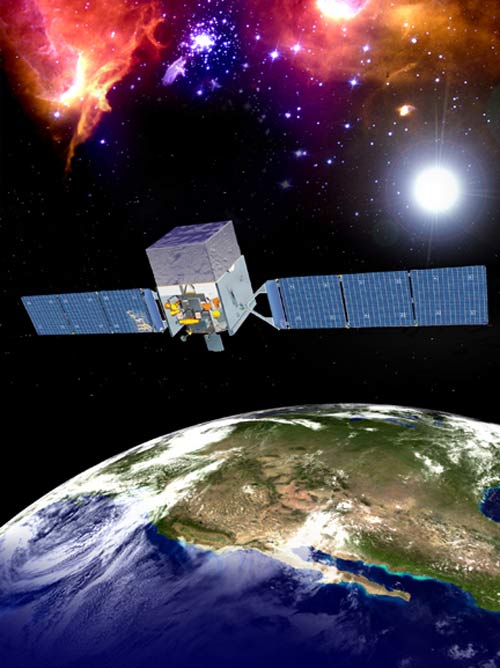NASA's Newest Space Telescope Renamed Fermi

NASA's new GLAST space telescope is up and running in orbit,and going by a brand new name.
On Tuesday, NASA rechristened the Gamma-ray observatory the FermiGamma-ray Space Telescope after Italian scientist Enrico Fermi, a pioneer inhigh-energy physics.
"Enrico Fermi was the first person to suggest howcosmic particles could be accelerated to high speeds," said Paul Hertz,chief scientist for the Science Mission Directorate at NASA Headquarters inWashington, D.C. "His theory provides the foundation for understanding thepowerful phenomena his namesake telescope will discover."
Formerly known as the Gamma-ray Large Area Space Telescope, theFermi observatory produced its first all-sky map in gamma rays within thefirst few days of operations, revealing the glowing gas of our Milky Way galaxy,blinking spinning stars called pulsars and a flaring galaxy billions oflight-years away.
"We did this map in a very brief period of time, justin a matter of days," said Fermi project scientist Steve Ritz of NASA'sGoddard Space Flight Center in Greenbelt, Md., during a Tuesday teleconference."The previous experiment, EGRET [NASA's Energetic Gamma Ray ExperimentTelescope], took more than a year to make an equivalent map. That holds atremendous amount of promise for things to come."
The $690million Fermi telescope launchedJune 11 from Florida's Cape Canaveral Air Force Station to begin a plannedfive-year mission to scan the skies for high-energy gamma-raylight. This radiation, far beyond the range visible to the human eye, revealssome of the most energetic and mysterious events in the universe, includingdark matter, black holes and spinning pulsars.
Since its launch the Fermi observatory has seen smoothsailing with no major issues during its check-out phase, mission managers said.
Breaking space news, the latest updates on rocket launches, skywatching events and more!
"Everything worked as expected and then some," Ritzsaid. "None of us could have actually have asked for such a smooth turnon. It went like clockwork where we were actually ahead of the clock."
Fermi recently completed its 60-day checkout and calibrationperiod, and has officially begun its mission to continuously survey the sky andinvestigate any detected sources of gamma-ray bursts. These few-seconds-longfireworks are the most luminous flashes seen in the universe since the bigbang. Scientists aren't sure what causes the displays, but suspect they occurwhen a black hole swallows up a massive star.
So far the observatory hasn't been able to study any ofthese bursts in detail yet with its Large Area Telescope (LAT) instrument.
"There's been a little bit of bad luck, the burstshaven?t been cooperating with us," said Charles "Chip" Meegan, FermiGamma-ray Space Telescope burst monitor principal investigator, of NASA'sMarshall Space Flight Center in Huntsville, Ala. "There's no doubt weregonna get some good ones, it's just a matter of waiting."
The Fermi observatory mission is a collaborative effort betweenNASA, the U.S. Department of Energy, and academic institutions and partners inFrance, Germany, Italy, Japan, Sweden, and the United States.
- Video - GLAST Cast Part 1
- Video -GLAST Cast Part 2
- The Strangest Things in Space

Clara Moskowitz is a science and space writer who joined the Space.com team in 2008 and served as Assistant Managing Editor from 2011 to 2013. Clara has a bachelor's degree in astronomy and physics from Wesleyan University, and a graduate certificate in science writing from the University of California, Santa Cruz. She covers everything from astronomy to human spaceflight and once aced a NASTAR suborbital spaceflight training program for space missions. Clara is currently Associate Editor of Scientific American. To see her latest project is, follow Clara on Twitter.
